Welcome to our free classical music site

Do you write about classical music? Are you a blogger? Want to team up with Classical Connect? Send us a message, let's talk!

Do you write about classical music? Are you a blogger? Want to team up with Classical Connect? Send us a message, let's talk!
May 13, 2013. Claudio Monteverdi was born on May 15, 1567 in Cremona, a town famous as a musical center and even more so for its luthiers: by the time Monteverdi was born, the Amati family was already producing fine violins for two generations, the Guarneris were to come shortly thereafter, then followed by Antonio Stradivari. Young Claudio took musical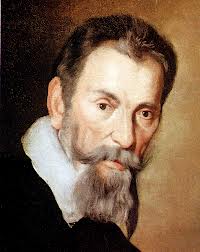 lessons from the maestro di capella of the Cremona Cathedral. He wrote his first motets and madrigals at the age of 15. Shortly after he moved to Mantua to serve at the court of Vincenzo Gonzaga. The duke was a major patron of arts, befriending the poet Torquato Tasso and employing the painter Peter Paul Rubens (two and a half centuries later Giuseppe Verdi would stage one of his most famous operas, Rigoletto, at the ducal palace). Monteverdi stayed in Mantua for more than 20 years; he married there and had children. His official position was that of the court conductor. In 1613 he moved to Venice to assume the same position in the basilica of San Marco, were Andrea and then Giovanni Gabrieli served as organists before him. In 1632 he became a priest. He lived in Venice for the rest of his life, and died there in 1643. He’s buried in the great basilica of dei Frari.
lessons from the maestro di capella of the Cremona Cathedral. He wrote his first motets and madrigals at the age of 15. Shortly after he moved to Mantua to serve at the court of Vincenzo Gonzaga. The duke was a major patron of arts, befriending the poet Torquato Tasso and employing the painter Peter Paul Rubens (two and a half centuries later Giuseppe Verdi would stage one of his most famous operas, Rigoletto, at the ducal palace). Monteverdi stayed in Mantua for more than 20 years; he married there and had children. His official position was that of the court conductor. In 1613 he moved to Venice to assume the same position in the basilica of San Marco, were Andrea and then Giovanni Gabrieli served as organists before him. In 1632 he became a priest. He lived in Venice for the rest of his life, and died there in 1643. He’s buried in the great basilica of dei Frari.
Monteverdi’s music spans two styles, that of the late Renaissance and the nascent Baroque. He wrote nine books of madrigals, church music and operas. You can listen to Parlo, miser'o taccio?, a madrigal from Book VII, here (Cettina Cadelo and Cristina Miatello, sopranos, Giovanni Faverio, bass) and to Dolcissimo uscignolo, from Book VIII, here (Anthony Rooley conducts his Consort of Musicke). Monteverdi’s truly revolutionary achievements were in opera. He wrote eighteen of them, but only L'Orfeo, which he wrote while in Mantua in 1607, Il ritorno d'Ulisse in patria(The Return of Ulysses to his Homeland), written in Venice around 1639, and L'incoronazione di Poppea (The Coronation of Poppaea), 1643, survive in complete form. L'incoronazione was revived at the end of the 20th century, and there are several recording of the opera. Here is the aria Disprezzata Regina from L'incoronazione. It’s sung by Frederica von Stade with Raymond Leppard conducting the Scottish Chamber Orchestra.
Maria Theresia von Paradis was born on May 15, 1759. She lost her sight at anearly age, but continued to study music (one of her teachers was Antonio Salieri) and became a concretizing pianist and singer. She also wrote several cantatas and some instrumental pieces. She’s famous for three things: for being treated by Franz Anton Mesmer, the inventor of mesmerism, with no lasting effects; for being a probable dedicatee of Mozart’s Piano Concerto no. 18; and for writing a beautiful piece called Sicilienne, even though these days many musicologists doubt the attribution. Here it is, played by Jacqueline du Pré, with Gerald Moore on the piano.Permalink
May 6, 2013. Brahms, Tchaikovsky – and Stamitz. Two great composers of the 19th century were born on May 7: Johannes Brahms in 1833, and Pyotr (or Peter Ilyich, as by some twist of linguistic fate he became known in the English-speaking world) Tchaikovsky seven years later. Last year to celebrate their birthdays we played their first piano concertos (Brahms wrote two, both great; Tchaikovsky – three, but only the first one remains popular, and for good reason). This time we’ll turn to their violin concertos. Brahms wrote his first and only violin concerto, Op. 77 in D Major, in 1878. It was dedicated to Joseph Joachim, Brahms’s friend and one of the most prominent violinists of the 19th century. Joachim premiered the concerto the same year in Leipzig, in a concert that also featured Beethoven’s violin concerto. Brahms himself conducted the Gewandhaus orchestra. Joachim composed the cadenza, which is the version we’ll hear, in the performance by the violinist Vadim Gluzman, with Saarbrücken Radio Symphony, Günther Herbig conducting.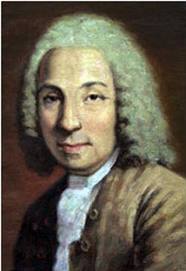
As it happens, Tchaikovsky also wrote his violin concerto, Op. 35, also in D Major ,and also in 1878. He was staying in Clarens, a small village not far from Montreux on Lake Geneva, recovering from his disastrous marriage to Antonina Milyukova. (Clarens had a number of connections with Russia: Stravinsky lived and wrote most of the Rite of Spring in Clarens in 1912, and later, in 1920, while there, wrote another ballet, Pulcinella. Vladimir Nabokov is buried in Clarens). Tchaikovsky dedicated his concerto to the famous violin teacher Leopold Auer, expecting him to play the premier. But Auer, who read the score presented by the composer, decided that he didn’t like the concerto and refused to perform it. Tchaikovsky was deeply hurt. The work was eventually premiered in Vienna by Adolph Brodsky, and Tchaikovsky changed the dedication to him. The concerto was rather poorly received; Eduard Hanslick, an influential critic and big supporter of Brahms, called it “pretentious.” Perceptions changed quickly, however, and since then Tchaikovsky’s concerto has become one of the most popular in the violin repertoire. We’ll hear it in the performance by Julia Fischer; Yakov Kreizberg conducts the Russian National Orchestra. Kreizberg, the brother of another famous conductor, Semyon Bychkov, died at the age of 51 in 2011, five years after this recording was made.
PermalinkCarl Stamitz is not as famous as either Brahms or Tchaikovsky, and deservedly so. Still, he wrote some very nice music, and probably more clarinet concertos than any other composer - eleven in all. Stamitz was born on May 8, 1745, in Mannheim. His father, Johann, a noted composer and violinist, was appointed to the court of the Elector several years earlier, and was Carl’s first music teacher. The Elector maintained an orchestra that was famous around Europe; Carl joined it at the age of 17. Among the court musicians there were a number of composers, who are now collectively known as Mannheim School. While not very famous nowadays, these composers, and Carl Stamitz among them, influenced both Franz Joseph Haydn and Mozart. In 1770 Carl left the orchestra and began a career of a traveling virtuoso: he played violin, viola, and viola d'amore (Carl eventually wrote several works for this instrument). He traveled all around Europe, playing concerts in Paris, London, Saint Petersburg, and many principalities of Germany. Eventually he moved to Jena, and died there, impoverished, in 1801. It’s said that in his last years his interests turned to alchemy. Stamitz’s Viola concerto was written in 1774. A lovely piece, it’s performed here by the German violist Tabea Zimmermann, with the European Union Chamber Orchestra, Dimitri Demetriades conducting.
April 29, 2013. Alessandro Scarlatti. These days Scarlatti-père is not as famous as his son Domenico, but in his day Alessandro was the foremost opera composer.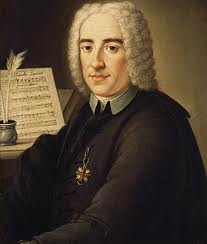 He was born in Palermo, the Kingdom of Sicily, on May 2, 1660. At the age of 12 he was sent to Rome. He wrote his first opera at the age of 19; Queen Christina of Sweden, who then lived in Rome, was impressed and offered her patronage. His work was noticed in Naples, at that time one of the greatest music centers of Europe, and in 1684 he became Maestro di Cappella to the viceroy of Naples. He stayed there till 1702 and wrote 40 operas. For a while he moved to Florence but then returned to Rome, where he was offered a position of Maestro di Cappella at the court of Cardinal Pietro Ottoboni (just some years earlier Arcangelo Corelli had the same patrons, Queen Christina and Cardinal Ottoboni). While in the employ of the Cardinal, he wrote several operas, including Il Mitridate Eupatore, which became very popular (here is the aria Cara tomba sung by the German coloratura soprano Simone Kermes). In 1706 Scarlatti was elected to the Accademia dell'Arcadia (as was Corelli). There he probably met the young Handel, who then lived in Rome and attended meetings of the Academy often. In 1709 Scarlatti moved back to Naples, where he continued to write at a furious pace: operas (he wrote a total 115 of them), masses and chamber cantatas. He retired from the viceroy’s court in 1723 and died two years later, on October 24, 1725.
He was born in Palermo, the Kingdom of Sicily, on May 2, 1660. At the age of 12 he was sent to Rome. He wrote his first opera at the age of 19; Queen Christina of Sweden, who then lived in Rome, was impressed and offered her patronage. His work was noticed in Naples, at that time one of the greatest music centers of Europe, and in 1684 he became Maestro di Cappella to the viceroy of Naples. He stayed there till 1702 and wrote 40 operas. For a while he moved to Florence but then returned to Rome, where he was offered a position of Maestro di Cappella at the court of Cardinal Pietro Ottoboni (just some years earlier Arcangelo Corelli had the same patrons, Queen Christina and Cardinal Ottoboni). While in the employ of the Cardinal, he wrote several operas, including Il Mitridate Eupatore, which became very popular (here is the aria Cara tomba sung by the German coloratura soprano Simone Kermes). In 1706 Scarlatti was elected to the Accademia dell'Arcadia (as was Corelli). There he probably met the young Handel, who then lived in Rome and attended meetings of the Academy often. In 1709 Scarlatti moved back to Naples, where he continued to write at a furious pace: operas (he wrote a total 115 of them), masses and chamber cantatas. He retired from the viceroy’s court in 1723 and died two years later, on October 24, 1725.
By the end of his life Scarlatti’s operas were eclipsed by Handel; not many of them are performed these days, although lately there has been somewhat of a revival. Still, not only did Scarlatti write some very lovely music, he was an innovator as well: for his operas he established a form of three-part overture, a forerunner of the classical symphony. You can listen to two arias from Scarlatti’s early operas. Beniamino Gigli, one of the greatest tenors of the 20th century, sings the aria "Già il sole dal Gange" from L'honestà negli amori (the opera was written in 1680). And here the technically perfect Cecilia Bartoli sings the aria O cessate di piagarmi from the opera Il Pompeo (1683).
PermalinkApril 22, 2013. Sergei Prokofiev. Tomorrow is the birthday of Sergey Prokofiev, one of the greatest composers of the 20th century; he was born on April 23, 1891. We have written about him pretty extensively before, so we thought we’d celebrate this anniversary by looking into some of his compositions. Prokofiev was tremendously versatile and wrote in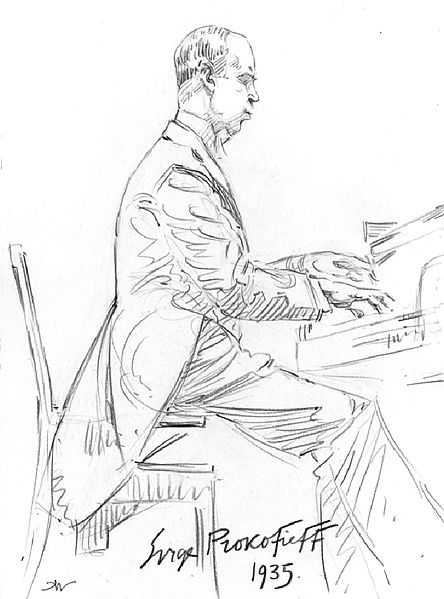 practically all musical genres. He wrote for the piano, and not just sonatas, which are among the most profound pieces in his output, but also smaller pieces, among them the Toccata, Sarcasms, and twenty Visions fugitives. He also completed five piano concertos. A superb pianist himself, he transcribed some of his own symphonic pieces to piano and played them in concerts. He wrote a lot of instrumental music: sonatas (and other pieces) for violin and for cello; he composed a wonderful flute sonata, which later, on the urging of his good friend David Oistrakh, he transcribed for the violin. His violin and cello concertos are performed regularly. He wrote symphonic music throughout his entire life, from Scythian Suite, his response to Stravinsky’s Rite of Spring, in 1915 and Symphony no. 1, Classical, in 1916, to Symphony no. 7, which he completed while ill not long before his death in 1953. And of course the ever-popular ballets; operas, some successful (like Igrok), some less so; and even very decent film scores.
practically all musical genres. He wrote for the piano, and not just sonatas, which are among the most profound pieces in his output, but also smaller pieces, among them the Toccata, Sarcasms, and twenty Visions fugitives. He also completed five piano concertos. A superb pianist himself, he transcribed some of his own symphonic pieces to piano and played them in concerts. He wrote a lot of instrumental music: sonatas (and other pieces) for violin and for cello; he composed a wonderful flute sonata, which later, on the urging of his good friend David Oistrakh, he transcribed for the violin. His violin and cello concertos are performed regularly. He wrote symphonic music throughout his entire life, from Scythian Suite, his response to Stravinsky’s Rite of Spring, in 1915 and Symphony no. 1, Classical, in 1916, to Symphony no. 7, which he completed while ill not long before his death in 1953. And of course the ever-popular ballets; operas, some successful (like Igrok), some less so; and even very decent film scores.
Prokofiev returned from France to the Soviet Union in 1936. He was promised independence and privilege, and for the rest of his life he did live a life very different from that of an average Soviet citizen. Still, he felt compelled to write “appropriate” music, for example a Cantata for the 20th Anniversary of the October Revolution, based on the writings of Marx, Lenin and Stalin, which he started almost immediately upon his arrival in Moscow. Unfortunately for Prokofiev, the music turned to be too unconventional, and wasn’t performed till much later, when both Prokofiev and Stalin were already dead. That didn’t stop Prokofiev from trying: he wrote such pieces as the cantata Zdravitsa, hailing Stalin, and music for the film Alexander Nevsky. These attempts to ingratiate himself with the Soviet leadership didn’t really help: Prokofiev, always under suspicion, completely fell from grace after the war, when the Party intensified its attacks on so-called “formalism.” In 1948 his first wife Lina was arrested on the usual trumped-up charges of espionage. Prokofiev had to work hard on creating “Soviet” music: instinctively, his music remained free of any traces of Social realism (in that he was very different from Shostakovich). The case in point is the trio of piano sonatas, sometimes called War sonatas, numbers 6, 7, 8. They were composed from 1939 through 1944. These sonatas are among the greatest in the piano repertoire of the 20th century. Number 6 was written in 1939-40, and first performed by the composer himself. Sviatoslav Richter became a great champion of this sonata. No. 7 was completed in 1942, and premiered by Richter. No. 8 was completed in 1944 and premiered by Emil Gilels. Here’s piano sonata No. 6 in A major, Op. 82, performed by Sviatoslav Richter in Locarno on September 8, 1966 (live recording). The sketch above of Sergei Prokofiev giving the premiere of his 3 Pieces Op.59 (above) was made in 1935 by Hilda Béatrice Wiener.
PermalinkApril 15, 2013. Josquin des Prez. We hope that admirers of Franz von Suppé’s operettas, Nikolai Myaskovsky’s symphonies and Giuseppe Torelli’s concerti grossi will forgive us if we skip their birthdays (all three were born this week) and instead write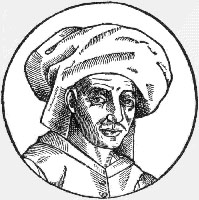 about a composer whose birthday is unknown. Josquin des Prez, one of the greatest Franco-Flemish composers, was born around 1450 (or several years later), probably in the County of Hainaut, which occupied the land on the border between modern-day Belgium and France and then part of the Duchy of Burgundy. The lands of the Duchy, geographically separated from the Burgundian proper and consisting of small counties that are now Belgium and the Netherlands, were inherited by the dukes at the end of the 14th century. The Duchy was one of the most developed European realms, both economically and artistically. Philip the Good, the duke who ruled from 1419 to 1467, was famous as a patron of painters, Jan van Eyck and Roger van der Weyden among them. Guillaume Dufay, probably the most renowned composer of the time, worked in his employ. Very little is known about Josquin’s youth. It’s assumed that around 1477 he traveled to Aix-en-Provence and was a singer in the chapel of René, Duke of Anjou. Around 1480 he worked in Milan, probably it the service of Cardinal Ascanio Sforza, well known to the fans of the TV series The Borgias. And it was probably Sforza who introduced Josquin to the Papal court in Rome. From 1489 to 1495 Josquin sang in the papal choir; a wall of the Sistine Chapel bears a graffito with his name. All the while he was also composing: we know that some of his motets are dated to those years. He probably moved to Milan around 1498 to work for the Sforzas again, and after Milan fell to the French he moved to France. In 1503 he was hired by Ercole, the Duke of Ferrara. It was here that he composed a popular Miserere, a motet for five voices in plainchant, which was probably inspired by the life and execution of Girolamo Savonarola (you can listen to it here, performed by the ensemble De Labyrintho, Walter Testolin conducting). In 1504 Josquin left Ferrara and returned to Condé-sur-l'Escaut, not far from where he was born. He lived there till his death in 1521.
about a composer whose birthday is unknown. Josquin des Prez, one of the greatest Franco-Flemish composers, was born around 1450 (or several years later), probably in the County of Hainaut, which occupied the land on the border between modern-day Belgium and France and then part of the Duchy of Burgundy. The lands of the Duchy, geographically separated from the Burgundian proper and consisting of small counties that are now Belgium and the Netherlands, were inherited by the dukes at the end of the 14th century. The Duchy was one of the most developed European realms, both economically and artistically. Philip the Good, the duke who ruled from 1419 to 1467, was famous as a patron of painters, Jan van Eyck and Roger van der Weyden among them. Guillaume Dufay, probably the most renowned composer of the time, worked in his employ. Very little is known about Josquin’s youth. It’s assumed that around 1477 he traveled to Aix-en-Provence and was a singer in the chapel of René, Duke of Anjou. Around 1480 he worked in Milan, probably it the service of Cardinal Ascanio Sforza, well known to the fans of the TV series The Borgias. And it was probably Sforza who introduced Josquin to the Papal court in Rome. From 1489 to 1495 Josquin sang in the papal choir; a wall of the Sistine Chapel bears a graffito with his name. All the while he was also composing: we know that some of his motets are dated to those years. He probably moved to Milan around 1498 to work for the Sforzas again, and after Milan fell to the French he moved to France. In 1503 he was hired by Ercole, the Duke of Ferrara. It was here that he composed a popular Miserere, a motet for five voices in plainchant, which was probably inspired by the life and execution of Girolamo Savonarola (you can listen to it here, performed by the ensemble De Labyrintho, Walter Testolin conducting). In 1504 Josquin left Ferrara and returned to Condé-sur-l'Escaut, not far from where he was born. He lived there till his death in 1521.
The attribution of Josquin’s opus is a work in progress in itself: rather than adding to it, musicologists subtract works that were traditionally credited to him. Still, even in this diminished state, the surviving corpus is large: 16 masses (though the authenticity of some of them is in doubt), and a large number of motets and chansons. His polyphonic style was highly influential, and he was the most famous composer till Palestrina more than half a century later. Here is the motet Ave Maria, performed by Tallis Scholars, and here – the first two parts from his famous Missa La sol fa re mi, Kyrie and Gloria, performed by the same ensemble. Josquin took the syllables of a phrase "Lascia fare mi" ("leave me alone" in Italian) and derived notes La (A), Sol (G), Fa (F), Re (D), and Mi (E) from it. Different figures consisting of these notes appear throughout the Mass.
PermalinkApril 8, 2013. Joshual Bell and the Academy of St. Martin in the Fields. Joshua Bell is one of the most successful American violin virtuosos, known forhis beauty of tone and exceptional technique.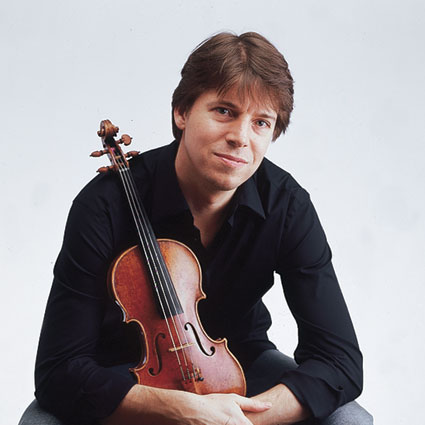 Joshua studied with Josef Gingold at the University of Indiana and later took classes with Ivan Galamian and Henryk Szeryng. When he was 14 he appeared as a soloist in a Mozart concerto with the Philadelphia Orchestra under Riccardo Muti. Three years later he played at Carnegie Hall with the St. Louis Symphony. He went on to perform at all the major concert halls, in solo recitals and with orchestras. Among his recordings are violin concertos by Beethoven, Mendelssohn, Brahms, Tchaikovsky, and Sibelius. During his career he played and recorded with Jean-Yves Thibaudet, Steven Isserlis and other musicians; he also partnered with the Saint Paul Chamber Orchestra. In 2007 in recognition of his achievements he was awarded the Avery Fisher Prize.
Joshua studied with Josef Gingold at the University of Indiana and later took classes with Ivan Galamian and Henryk Szeryng. When he was 14 he appeared as a soloist in a Mozart concerto with the Philadelphia Orchestra under Riccardo Muti. Three years later he played at Carnegie Hall with the St. Louis Symphony. He went on to perform at all the major concert halls, in solo recitals and with orchestras. Among his recordings are violin concertos by Beethoven, Mendelssohn, Brahms, Tchaikovsky, and Sibelius. During his career he played and recorded with Jean-Yves Thibaudet, Steven Isserlis and other musicians; he also partnered with the Saint Paul Chamber Orchestra. In 2007 in recognition of his achievements he was awarded the Avery Fisher Prize.
The Academy of St. Martin in the Fields is a famed chamber orchestra, which was founded by Sir Neville Marriner in 1959. Sir Neville led the orchestra till 1974, when the late Iona Brown took over (he stayed as the Chairman till 1992). Murray Perahia was the principal guest conductor for a number of years, but since Neville Marriner the orchestra didn’t have a formal music director. This changed in September 2011, when Joshua Bell was appointed music director of the Academy. A CD containing two of Beethoven’s symphonies, numbers Four and Seven, is their first collaborative recording.
Sandwiched between the two giants, Eroica, no. 3 and Symphony no. 5, a somewhat less ambitious no. 4, op. 60 was composed in 1806, the same year Beethoven completed the violin concerto and piano concerto no. 4. The symphony opens with a slow, pensive introduction, which eventually burst into a full-blooded Allegro vivace. The stately second movement, Adagio, allows the Academy strings to shine. The elegant third movement, also in the tempo of Allegro vivace, is shaped as a scherzo, and the fourth, Allegro ma non troppo, is, as the marking suggests, fast but not too much so, and is played as such. Symphony no. 7 op. 92, completed six years later, also belongs to Beethoven’s “middle period.” His hearing was deteriorating rapidly, but in 1812 he apparently still could follow a conversation and hear music. Like the Fourth, symphony no. 7 consists of four movements. The first movement, Poco sostenuto – vivace starts with a slow introduction, similar to the beginning of the Fourth, and then proceeds, rather solemnly, until it evolves into a more nimble Vivace. Some of the tonal repetitions of this movement (as well as those in other parts of the symphony) sound almost maniacal, and prompted Carl Maria von Weber to call it "fit for a madhouse." Nonetheless, it miraculously propels forward following its internal dynamics. The second movement, the somber Allegretto, remains one of Beethoven’s most popular pieces. You can listen to it here. The contrasting third movement, Presto – Assai meno presto, is full of verve, and so is the symphony’s dance-like fast-paced finale, Allegro con brio. It was not written elegantly, and the Academy interprets it that way, earthily and energetically.
For this recording, the Academy added several musicians for a total of about 40, still a relatively small ensemble compared to the modern symphony orchestra. The sound is supple and well balanced, tempos sensible, without any excesses, and the phrasing compelling. The recording sounds fresh and, we believe, portends a happy partnership between the orchestra and its new music director. We look forward to their new releases.
Permalink